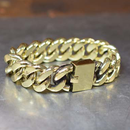Introduction: Simple Signet Ring
Hello! I wanted to start off by apologising for the poor image quality in this instructable. I had lost access to my nice camera this time but I should get it back soon!
Anyway, today we're making a simple hollow signet ring. Signet rings are a very old form of jewellery with roots in utility. Rings were worn to communicate information about yourself and also as a conveniently stored wax stamp. The simple design of this ring allows you to customize in any way you see fit! Without further ado, here's what we're going to need to make this signet ring.
Tools
- Jeweller's saw
- Files
- Pliers
- Ring mandrel (tapered steel tube)
- Soft mallet (rubber, leather etc)
- Doming punches or round steel objects
- Torch (butane, propane etc)
- Polishing equipment (buffs, automotive polish, rouge... Whatever you like!)
Materials
- Copper sheet ~0.7mm thick (Any metal works, copper is very soft and forgiving though)
- Solder (silver, plumbers or what you have on hand)
- Pickle (Or citric acid)
This project assumes some competence with basic jeweller's skills like fabrication, sawing and soldering.
Step 1: Saw Out Blank
There are two ways to create the template for the signet ring: maths or trial and error. I opted for trial and error to end up with the template attached. It’s important to print the template to that the length of the silhouette is 75mm from end to end (300dpi).
Let's start off by printing out the template provided here and glueing it to the copper stock. Using the jeweller's saw, rough out the shape and then bring it into profile with your files.
Step 2: Bend Into Rough Shape
Using pliers, bend the blank into the rough shape of the ring. It's more important to get the ends to meet together flush then arrive at the final form here. Using files, close the gap between two of the ends to prepare for a strong solder joint. We want the ends to meet flush, you shouldn't be able to see light through the crack.
Step 3: Solder Ends Together
Carefully solder the ends together. This is a simple join that shouldn’t give you too much trouble.
Step 4: Shape the Ring
Now we need to bring the ring closer towards the final shape. On the ring mandrel, beat the band of the ring round. It should be much larger than your finger size here, you’ll find out why later. To round out the face of the signet I used a doming punch that was much larger in diameter than the hole. Be careful you don’t use too much force and make the bezel anticlastic. If you don't have a doming punch set, you can use a large bolt like the one pictured below:

Step 5: Dome the Band
To give the ring a larger form and bring it to the correct finger size, we also dome the band. I used a smaller punch here. You’ll want to keep on alternating between doming the band and rounding the ring on the mandrel until you hit a balance. File the inside of the finger hole flat so the edges match up flush with the band we add in the next step.
Step 6: Add the Internal Sleeve
To make the ring more comfortable and complete, bend a length of the copper sheet into a band that fits nicely into the finger hole. Again this can take trial and error or I recommend measuring the diameter of the hole and using ‘pi x d’ to find the internal circumference of the band. If you happen to fluke it on your first try like I did, go ahead and solder it to the ring. I used plenty of solder here for the large contact area shared between the pieces.
Step 7: Clean Up the Band
Time to clean up a little bit! I used a saw and files to remove the overhang from the band and bring the ring back to the correct profile. After pickling, use files to even up all of the soldered surfaces of the ring. It’s also important to file the open bezel on the top of the ring flat so the we can solder a lid on top flush.
Step 8: Solder a Top on the Ring
I used an offcut from the template for the lid of the ring. After cutting a rough tracing of the signet face, solder the top on. Easy! You could alternatively solder a coin, set a stone or do something else with the open top of the ring.
Step 9: Clean Up!
How about some more cleaning action? Go to town with all of your files, sandpapers and polishing equipment to finish the ring just how you like.
Step 10: Done!
You’re basic signet ring is done! I went for the high glossy finish myself, a perfect canvas for any type of patina.
Here you can really make the ring your own. You could set stones into the face, carve initials, are solder a piece of fretwork onto the top for pressing wax seals! Try using other metals like silver or brass too, there are a lot of possibilities.
Give it a go, make it yours :)



